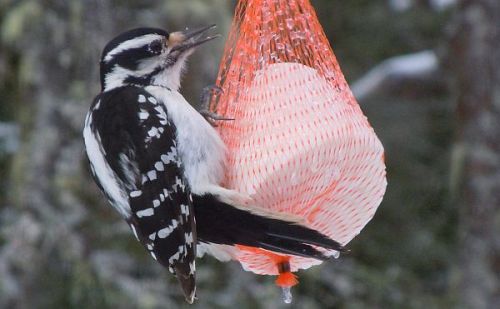May 9, 2015 by flandrumhill
 Today, 2015’s Global Big Day, everyone on the planet is invited to count the birds they see or hear, note the species and submit observations to www.ebird.org so that a global count can be made. You need not be an expert bird enthusiast, just someone who loves the birds in your own backyard.
Today, 2015’s Global Big Day, everyone on the planet is invited to count the birds they see or hear, note the species and submit observations to www.ebird.org so that a global count can be made. You need not be an expert bird enthusiast, just someone who loves the birds in your own backyard.  A big day is akin to a big year, “an informal competition among birders to see who can see or hear the largest number of species of birds within a single calendar year and within a specific geographical area.” (See Wikipedia for more information). I first came across the practice in ‘The Big Year‘ with Owen Wilson, Jack Black and Steve Martin as competitive birders in a movie based on a true story.
A big day is akin to a big year, “an informal competition among birders to see who can see or hear the largest number of species of birds within a single calendar year and within a specific geographical area.” (See Wikipedia for more information). I first came across the practice in ‘The Big Year‘ with Owen Wilson, Jack Black and Steve Martin as competitive birders in a movie based on a true story. 
 Inspired by the movie, this January I decided to start tracking the number of bird species I was able to see or hear in my local area. Nature obliged. One little bird told another little bird and amazingly, birds I hadn’t seen in years were suddenly visible again. Even ones I hadn’t ever seen locally seemed to come out of the woodwork. I’ve never seen as many bird species in my yard in such a short span of time. Last month I set up a birdwatching station in my preschool room. Bird feeders were hung on a tree near a window. Pictures identifying local birds were placed next to the window so that children knew exactly what to look for in the wooded area behind our room. In just a few weeks’ time, children have gone from saying ‘there’s a bird’ to ‘there’s a mourning dove’ and ‘I see two chickadees and a boy woodpecker.’ We’ve thrilled at the sight of brilliant red cardinals, ‘kissing’ mourning doves, and an enormous pileated woodpecker.
Inspired by the movie, this January I decided to start tracking the number of bird species I was able to see or hear in my local area. Nature obliged. One little bird told another little bird and amazingly, birds I hadn’t seen in years were suddenly visible again. Even ones I hadn’t ever seen locally seemed to come out of the woodwork. I’ve never seen as many bird species in my yard in such a short span of time. Last month I set up a birdwatching station in my preschool room. Bird feeders were hung on a tree near a window. Pictures identifying local birds were placed next to the window so that children knew exactly what to look for in the wooded area behind our room. In just a few weeks’ time, children have gone from saying ‘there’s a bird’ to ‘there’s a mourning dove’ and ‘I see two chickadees and a boy woodpecker.’ We’ve thrilled at the sight of brilliant red cardinals, ‘kissing’ mourning doves, and an enormous pileated woodpecker.
If I keep a green bough in my heart, the singing bird will come. ~ Chinese Proverb
Birds enhance our lives with their beauty and song. They witness our comings and goings as we move in and out of buildings and are an important part of our cityscapes, landscapes and seascapes. Share your enthusiasm today by taking an inventory of what you see in your own backyard. You’ll be glad you did.

For more information and to record your observations for current and subsequent years, please visit ebird’s Global Big Day at Global Big Day
Text and photographs copyright Amy-Lynn Bell 2015 – 2022
























